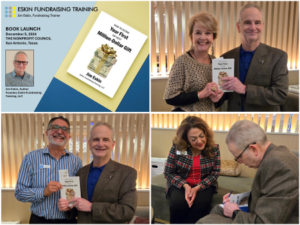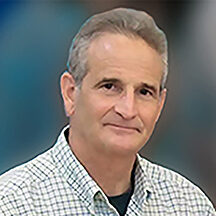Skipping Retirement
Have you ever had enjoyed a good book, movie or dining experience that was just so satisfying you didn’t want it to end? That’s the way I’m feeling about our run as a fundraising trainer/consultant. This had been in the making for several years as I was finishing my career leading advancement for three institutions of higher learning. I dreamt of venturing out on my own. Assume responsibility for all for all the risks but have the freedom and luxury of making my own decisions — supported by my wife Andrea and two darling cats who don’t contribute much other than encouraging breaks and providing classic examples of what the good life is about. My motivation can be boiled down to this: My first seven decades have been so enriched by so many men and women far wiser than I from whom I learned, was mentored by, and who believed in me. The list is long, starting with family, educators, bosses, colleagues and a golden circle of friends. Since 2018 when we launched Eskin Fundraising Training this has been the adventure of my life. Every day we’re making new friends literally all over the world who share a passion for the non-profit and philanthropic vision. Every day we learn something new. We have no intention of stopping or even slowing down. We are firmly committed to doing as much good as we can for as long as we can. And it’s just so much fun. Our thanks to Inside Charity for featuring our article on the subject of saying a resounding NO to retirement.

Dreaming Impossible Dreams
On August 28, 1963, 34-year-old Dr. Martin Luther King Jr. standing on the steps of the Lincoln Memorial in front of 250,000 people didn’t inspire America to get on the right side of history by saying “I have a strategic plan.” High performing organizations can’t move forward without sound strategic plans, but dreams are at the very heart of the non-profit sector and touching, improving and saving more lives, especially helping those who are struggling. These are often daunting, all-consuming and audacious challenges. But that doesn’t hold back the inspiring men, women and youth who are committed to giving everything they have and then some to reach the top of the mountain, and in doing so, change the world for the better. Meeting, collaborating with and supporting them however we can is our reason for being and our greatest privilege. There are Don and Donna Quixotes all around us. Here’s our news release that ran on EIN Presswire on this topic that is so near and dear to us.
Global Learning Community

When we launched Eskin Fundraising training in June 2018 we were extremely fortunate to have our live workshops hosted by the local Microsoft store. It was the absolutely perfect place to gather together professional and volunteer non-profit leaders to share wisdom, experience and personal insights on challenges and opportunities. The Microsoft Theater featured the finest projection system I’ve ever shown PowerPoint slides on. Presentations and discussions typically ran 90 minutes. We noticed that learning community members genuinely didn’t want to leave, and preferred staying much longer to exchange contact information, network, and make new friends. Then the pandemic hit in March 2020 and changed the world as we know it and changed our approach to harnessing the power of a learning community. We went virtual and have remained virtual ever since. Our audience not only dramatically grew in numbers, but even more dramatically grew geographically as leaders all across the country joined us. Now we are proud to proclaim that we have become international and are much the better for it. We’ve rewired our approach to live broadcasts that are much more conversational, multi-subject and engaging. We welcome healthy debate. We don’t have to agree on everything. In fact, it’s better when we don’t so we can understand differing perspectives.
We are so proud of our Brain Trust, which not only provides expertise in fundraising and advancement but other disciplines essential to leading healthier, happier and more fulfilling lives. This august line-up includes Leonardo Zangrando, Founder, Talk for Impact; Kristi Natalino, PhD, Physical Therapy, Treating the whole person — body, mind and soul; Don Gleason, President, Achieve New Heights; Marjorie Hope, Author, CONNECTIPLOMACY: Using our Differences to Connect; Rhanda Luna, Social Justice is Everyone’s Business; Pam Tyler, Putting Special in Special Events.
As a reminder, broadcasts are scheduled for the first Wednesdays of the month from 4 to 5 p.m., Central Daylight Time. The next broadcast is Wednesday, April 2nd. Participation is free, but you must register here. We especially appreciate being joined by our friends from around the world.
Podcast Power

A Cision PR Guide to Podcasts report spotlights that though podcasts might seem like a relatively new phenomenon, they’ve actually been around for more than 20 years. Their initial incarnation came in the early 2000s, with RSS feeds distributing MP3 audio files online at scale. By 2004, the term “podcast” (a portmanteau of “iPod” and “broadcast”) was being used to describe the format, and in 2005, Apple added support for podcasts to iTunes. Fast forward to today, and the world of podcasting is vast, spanning almost every imaginable genre including news, entertainment, culinary arts, and sports. According to eMarketer, the number of podcast listeners worldwide hit 546 million in 2024, and is forecast to reach 651 million in 2027. In the U.S. alone, 47% of the population (over the age of 12) are monthly podcast listeners, up from 15% in 2014. The medium is evolving, too. Though podcasts have traditionally been seen as audio presentations, video is becoming an increasingly valuable component as creators seek to reach audiences across multiple platforms. A 2024 study from Cumulus Media found that YouTube was the podcast destination of choice for U.S. consumers. Thirty one percent say it is the platform they use the most, followed by Spotify (21%) and Apple Podcasts (12%). The research found that those new to podcasts are more likely to prefer actively watching podcast videos, while those who began listening to podcasts more than four years ago prefer the audio-only experience. These statistics show the scale and scope of podcasting’s impact. In a relatively short period of time, the medium is now firmly in competition with traditional broadcast platforms like TV and radio for audience attention. We are so fortunate to partner with John Largent, CEO, Largent Media, one of the nation’s leading digital media and podcast production agencies. He has personally produced more than 5,000 podcasts. (For perspective more men have walked the moon.) While we’re on the subject, be sure to nominate a non-profit leader you know to be highlighted in our Non-Profit North Stars podcast series. Just complete this simple nomination form.
Forecasting 2025

Fundraise Up, in collaboration with Stripe, their dedicated payment partner, has released an inaugural report, providing an unparalleled look into donor behavior and fundraising trends, empowering organizations to uncover what truly drives donor engagement and giving. Highlights:
Forecast No. 1: Geography will play a greater role in donor acquisition …
Prediction: Regions with higher disposable income, such as the U.S. and Canada, will drive larger one-time and recurring donations.
Action: Use regional insights (like donation size or payment preferences) to create targeted campaigns for deeper engagement.
Forecast No. 2: Repeat giving is an untapped market …
Prediction: Canada leads the pack in donors making repeat donations within a year (outside recurring giving plans). But, the U.S., U.K., and A.U. all have the opportunity to catch up.
Action: Implement reactivation campaigns to take advantage of repeat-giving opportunities.
Forecast No. 3: Credit cards reign supreme, for now …
Prediction: Credit cards will remain the dominant payment method globally, but alternative payment options like Apple Pay, PayPal, and regional systems (U.K. Bacs and A.U. Becs) will gain traction.
Action: Take a cue from the eCommerce space and expand types of payment methods and integrate localized options to cater to regional preferences.
Forecast No. 4: Monthly giving will become more important for sustainability …
Prediction: Monthly donor acquisition continues to grow for organizations that prioritize grassroots sustainability through activated donor bases.
Action: Make the ask. Donors are more willing to give monthly today than ever before. Pairing this with transparency and impact updates will maximize monthly donor retention.
Just Do It

If you want common-sense wisdom, you might need only look to the north. In this instance, sage advice and counsel comes from Caitlin Padanyi, Lead, The Fundraising Academy, Calgary, Alberta, Canada. Recognizing that the vast majority of non-profits have annual budgets of less than $1 million she implores them to not agonize about the lack of analytics and high price consultants and take three immediate steps that can empower them to double or even more robustly increase gift income:
(1) It’s still worth sending an e-mail even if you can’t segment it perfectly (or even at all).
(2) You can absolutely send direct mail with Canva and a mail merge.
(3) You can (and should) start thanking donors without the perfect automation sequence.
She concludes that small non-profits indeed have the skills and capacity to keep donors connected and the motivate them to give more.
Financial Literacy

About half (54%) of U.S. adults say they know a great deal or a fair amount about personal finances. Another 33% say they know some about personal finances, while 13% say they don’t know much or know nothing at all, according to Pew Research Center. Knowledge about personal finances can refer to several strategies for managing money, including saving, budgeting, managing debt or investing. Financial literacy has been associated with greater financial well-being. There have long been economic gaps between Americans of different backgrounds, and the survey also finds gaps in financial literacy:
- Americans in households with upper incomes (72%) are more likely than those in households with middle (56%) or lower incomes (42%) to say they know at least a fair amount about personal finances.
- White adults (58%) are more likely than Black (50%) or Hispanic (41%) adults to say they know a great deal or fair amount. About half of Asian adults (49%) say the same. These differences by race remain regardless of income.
- Adults ages 50 and older (63%) are more likely than those 18 to 49 (45%) to say they are knowledgeable about personal finances.
- On the other hand, about one-in-five Americans with lower incomes (22%) say they don’t know much or know nothing at all about personal finances. That’s a notably higher share than among those with upper incomes (4%). About a quarter of Hispanic adults (27%) say the same, higher than among Asian (17%), Black (14%) or White adults (8%).
In Media We Don't Trust
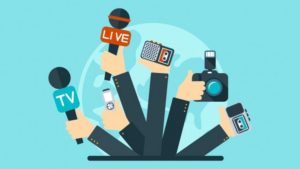
When Gallup began tracking Americans’ views of the news media in the early 1970s, attitudes were overwhelmingly positive, but public confidence in the Fourth Estate has collapsed. As a result, Americans’ trust in the mass media is at its lowest point in more than five decades. About two-thirds of Americans in the 1970s trusted the “mass media — such as newspapers, TV and radio” — either “a great deal” or “a fair amount” to “[report] the news fully, accurately and fairly.” By the next measurement in 1997, confidence had fallen to 53%, and it has gradually trended downward since 2003. Americans are now divided into rough thirds, with 31% trusting the media a great deal or a fair amount, 33% saying they do “not [trust it] very much,” and 36%, up from 6% in 1972, saying they have no trust at all in it.
In Memoriam: Sheila Klein

Too often those of us in the profession can get caught up in telling the macro-story when describing the impact of American philanthropy. Indeed, it is awesome. Take the magnificent story of volunteers. More than 75.7 million people — or 28.3% of Americans — formally volunteer through non-profits, giving more than 4.99 billion hours of service with $167.2 billion of economic value. But there is a moving personal story behind each and every volunteer. We just lost the indefatigable Sheila Klein to cancer. She was a remarkable person through and through. Andrea and I profoundly enjoyed knowing and collaborating with her. She perpetually sought to learn more about the art and science of fundraising, though her achievements spoke powerfully for themselves. She was an enthusiastic member of our learning community — adding her big smile and wisdom to our workshops. Her impact powerfully lifted the Assistance League of San Antonio — a volunteer driven organization that returns more than $1 million to the community, improves the lives of more than 30,000 people (primarily children) and harnesses about 70,000 volunteer hours. Sheila served in virtually every leadership capacity including as President and prolific Grants Chair. Her inspiring example reminds how much of an enormous difference a single person can make.
On Bookshelf: Perle Mesta
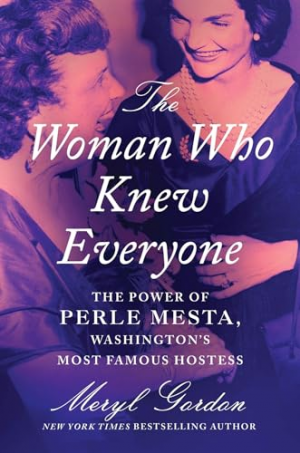
A deeply researched biography of the socialite, political hostess, activist and U.S. envoy to Luxembourg, Perle Mesta, from New York Times bestselling author Meryl Gordon, documents that she was a force to be reckoned with. In her heyday, this wealthy globe-trotting Washington widow was one of the most famous women in America, garnering as much media attention as Eleanor Roosevelt. Renowned for her world-class parties featuring politicians and celebrities, she was very close to three Presidents — Harry Truman, Dwight Eisenhower and Lyndon Johnson. Truman named her as the first female envoy to Luxembourg, which inspired the hit musical based on Perle’s life — “Call Me Madam” — which starred Ethel Merman, ran on Broadway for two years, and later became a movie. A pioneering supporter of the Equal Rights Amendment, she was a prodigious Democratic fundraiser and rescued Harry Truman’s financially flailing 1948 campaign. Perle’s lavish life and society adventures in Newport, Manhattan and Washington are chronicled, while highlighting her important, but nearly forgotten, contribution to American politics and the feminist movement. Since hospitality is so crucial to fundraising, take to heart this pearl from Perle: “The secret to my parties is in the hellos and the goodbyes.”
How Else To Feel Good
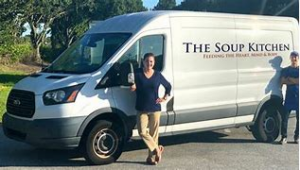
We know that there is ample scientific evidence that doing good is good for you and that donors of time, talent and treasure lead longer, healthier and happier lives. New research indicates the act of cleaning can spark joy. According to an online survey from Clorox, one in five Americans (21%) said they clean all the time to improve their mood. To dig deeper, Clorox teamed up with global neurotech leader, Emotiv, to test the feeling of clean compared to other feel-good activities, uncovering that 37% of participants felt better cleaning the toilet than petting puppies (they should have included cats too). Participants also enjoyed wiping coffee rings off the kitchen counter as much as getting their nails done or having their favorite latte or chai tea. Emotiv used electroencephalography (EEG) technology to measure brain activity reflecting positive emotions, enthusiasm and approach motivation, a.k.a. good feelings. While this type of science is far above my pay grade, Andrea reminds me on a daily basis of the importance of a clean house to mental health, and how I always push the envelope.
Quiz: America's Most Generous Donors
The Chronicle of Philanthropy’s Top 50 shows that America’s biggest donors gave $16.2 billion in 2024. They supported scholarships to reduce students’ college debt, biological and biomedical sciences, cancer research and treatment, non-profits that help people with developmental, intellectual, and physical disabilities, and much more. And while many of the donors are among the most prominent billionaires, a big share of those who gave large donations last year are quiet about their wealth and largesse. Note that not all philanthropists publicly disclose details about their giving, and they are not legally required to do so, leaving philanthropists like MacKenzie Scott off the list. Match the following mega-philanthropists with their amount of 2024 giving. Answers are shown at the bottom of the page.
1. Michael Bloomberg a. $168M
2. Warren Buffett b. $ 500M
3. Michael and Susan Dell c. $1.1B
4. Bill Gates d. $1.5 B
5. Thomas Golisano e. 3.7B
Stratagems is published monthly by Jim Eskin, Founder of Eskin Fundraising Training, LLC. We offer workshops and customized training sessions for board members, staff and volunteers of non-profit organizations of all kinds and sizes. For details about our services and information, or to find out how to schedule a training session for your organization, visit our website. Follow our events on Facebook, and read more articles about philanthropy on our LinkedIn page.
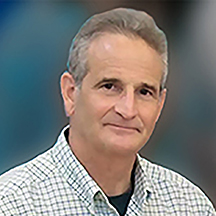
Jim Eskin, Founder
Eskin Fundraising Training
Email: [email protected]
Cell: 210.415.3748
www.eskinfundraisingtraining.com
ANSWERS TO THIS MONTH’S QUIZ: 1=e 2=c, 3=d, 4=a, 5=b |

